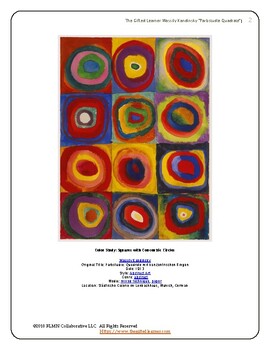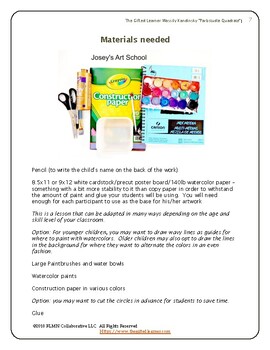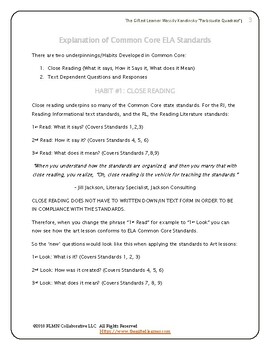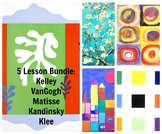Wassily Kandinsky Art Lesson K - 4th Grade Circles Art History and Project
- PDF
Also included in
- This art lesson bundle is a great resource to introduce your student to five different artists. This bundle includes Henri Matisse, Ellsworth Kelly, Paul Klee, Wassily Kandinsky and Vincent Van Gogh. The lesson is perfect for K through 5th grade with some variations. Students will have the opportuniPrice $6.50Original Price $9.00Save $2.50
Description
This lesson plan introduces your students to Artist Wassily Kandinsky. The lesson is perfect for Kindergarten through 4th grade. Students will have the opportunity to practice scissor skills and design techniques using paper in a collage format or this can be used as a straight forward painting project. The lesson will invite the child to create a beautiful unique art piece based on the techniques used by Mr. Kandinsky and offers an opportunity to work with concentric circles.
You can use this lesson in the following ways:
- a unit on the art of Wassily Kandinksy
- a 45-60 minute sub plan (could be broken into a 2 class project)
- a unit on collage - paper collage
- a introduction to the many ways artists create, expanding the student's awareness to art in different mediums
- a handy lesson for any time you want your students to work on scissor skills
- a geometry lesson on concentric circles
What you will find inside the lesson:
Artist: Wassily Kandinsky
-copy of the artwork
-questions to ask your students in order to engage the painting and fulfill the skill of close reading
-simple facts about the artist so that the student will have a basic art history lesson
-full color step by step art lesson with photographs and instructions
What teachers are saying:
-My students read about the artist and then were able to recreate his/her own version of the style of painting. This was used as a very useful guide and resource.
-This really helped me create an engaging art history unit! The students were able to discuss the artwork afterwards and it made their own artwork more intentional.
-My students love Kandinsky's art work, especially the concentric circles. Your resource is great and helps them to create their own.
-I often do an artist study every year and my students really look forward to it so this was a great activity. I made a google slide to start the unit that the kids loved. Then we did this project. The kids are really enjoyed it and they look really cool. But this project did take longer than I expected.
-This was amazing! What a great resource. I love your products. They are so detailed and so organized. I can't wait to do the next project. Thank you so much!
Make sure to click the GREEN STAR near my store name so that you can stay in touch with my store. I create new lessons every week.






